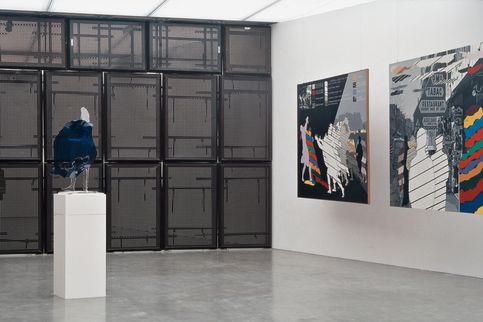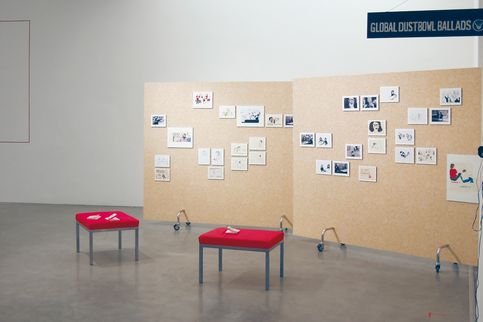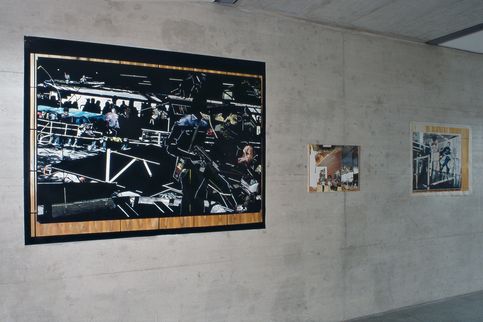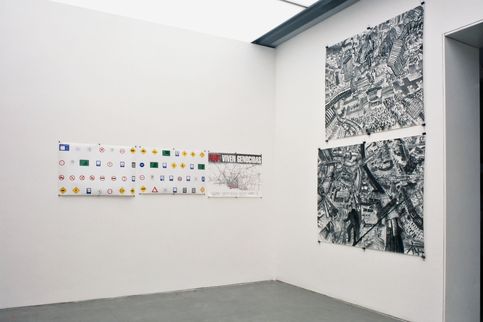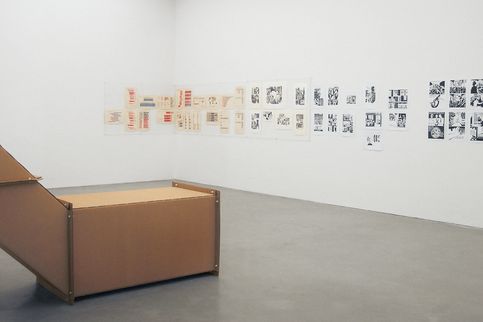Violence is at the Margin of All Things
Subject Relations, Political Militancy and Artistic Procedures
Guest-Curators:
Alice Creischer, Andreas Siekmann (Berlin/Germany)
Exhibition Production: Hemma Schmutz
Works by Gerd Arntz, Linda Bilda, Katja Eydel, Freies Fach, Gérard Fromanger, Global Dustbowl Ballads, Grupo de Arte Callejero, Imma Harms, Thomas Kilpper, Ulrike Müller (J.U.P.), Charlotte Posenenske, P.S.P.I., Yvonne Rainer, Christoph Schäfer, Patricia Reschenbach (J.U.P.), Dierk Schmidt, Theoretisches Fernsehen feat. Judith Hopf, Seth Tobocman, Ultra-red, Klaus Weber.
Each year at the time of the first exhibition, the Generali Foundation in Vienna offered an experimental program, and thus continued its series of collaborations with young artists. In 2002 the artists and writers Alice Creischer and Andreas Siekmann (Berlin, Germany) had been invited to develop an exhibition concept. Beyond the obligations of topicality, the exhibition was intended to fundamentally address the theme of "militancy" in terms of its historical and artistic modes. The exhibition brought together approximately twenty different artistic contributions from the United States of America, Argentina, and Europe, whereby the guest-curators also consciously drew on historical positions as reference material. The entire exhibition was integrated in a theater situation with the exhibition architecture arranged as stage and backstage.
"As we thought about an exhibition on the theme of militancy, there was the background of international protests against the politics of the WTO, the IMF, and the G8 summits. In any case, this was before an understanding of political militancy threatened to become caught between the grinding stones of terror and state counter-terror. After a period of reflection, however, particularly the latter strengthened our resolve to carry out our plans.
In our opinion, militancy is not located outside bourgeois society. It has been inherent to it ever since the French Revolution ended in the call to 'enrich yourselves.' Yet the 'Manifesto of the Equals' (1976) that followed refer to the same emancipatory ideas. What traces does this ambiguity of bourgeois freedom leave in bourgeois subjectivity and its artistic expressions? How have artists worked on this; how is their understanding of self linked with a political history of militancy; and what has changed in this now?
The terms 'art and militancy' cannot be pitted against one another along the lines of 'here the illusion and there the reality,' nor can they be subordinated in the sense of 'here the means to a political end.' Instead, it seems in both cases to be a matter of a form of performance or demonstration that is conjoined with the important presumption of publicly acting or articulating on behalf of others. The exhibition does not claim to supply a kind of global phenomenology on the theme of militancy. It can only remain a one-sided - very biased - sketch."
(Alice Creischer, Andreas Siekmann)
